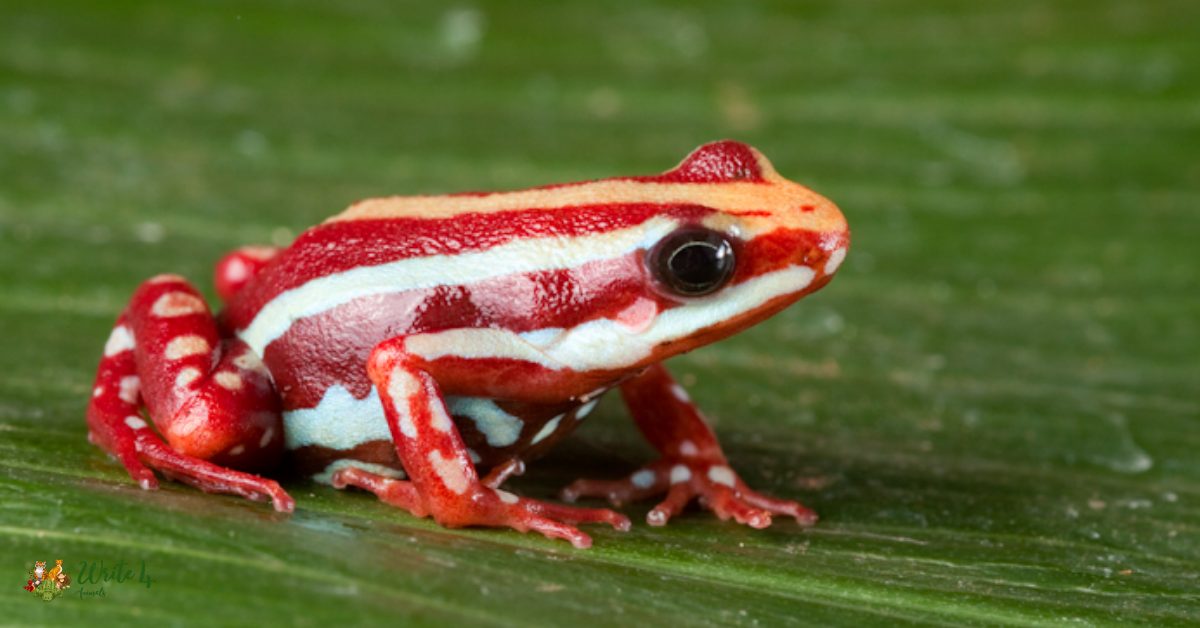Nature’s palette is filled with a breathtaking array of colors, each hue serving a unique purpose in the grand tapestry of life. One of the most striking and captivating colors found in the animal kingdom is red.
From the fiery reds of birds to the deep crimson shades of mammals, the world is home to a diverse array of red-hued creatures. In this blog post, we’ll take a journey through the vibrant landscapes of our planet to explore 16 remarkable red animals that capture the imagination and showcase the beauty of biodiversity.
16 Red Animals in the World
1. Scarlet Tanager (Piranga olivacea)
In the verdant canopies of North American forests, the Scarlet Tanager stands out as a beacon of crimson elegance. The male’s vibrant scarlet plumage, contrasting with the female’s subtler tones, creates a picturesque display among the lush foliage.
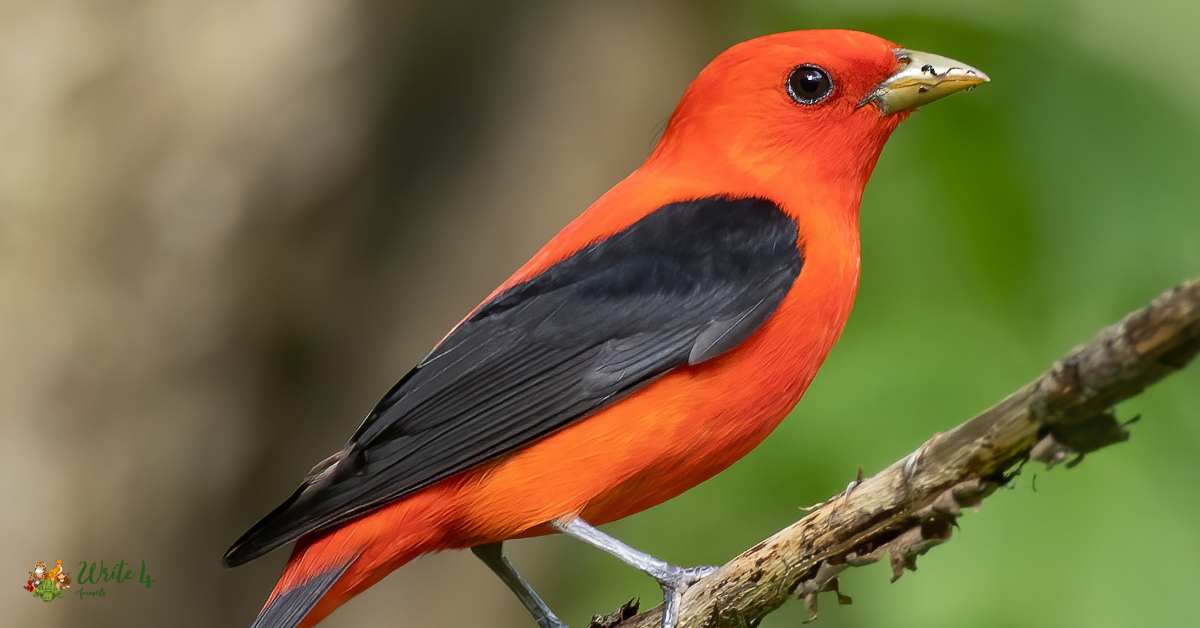
With a melodious song echoing through the treetops, this red animal becomes a living canvas of nature’s artistry, captivating birdwatchers with its striking presence.
Beyond its aesthetic appeal, the Scarlet Tanager plays a vital role in forest ecosystems, contributing to seed dispersal as it forages for insects and fruits. As a symbol of vitality and beauty, this red-feathered creature enriches the biodiversity of its habitat.
2. Tomato Frog (Dyscophus antongilii)
Venturing into the tropical rainforests of Madagascar unveils the enchanting Tomato Frog, a red animals that mimics the vibrant hue of its namesake.
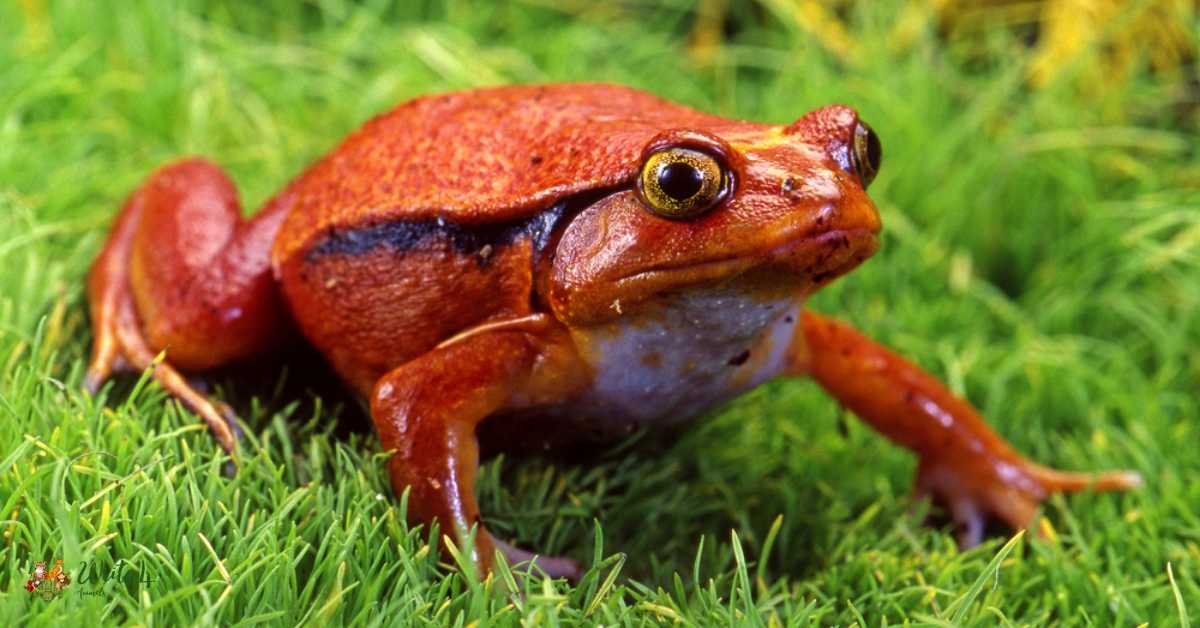
This petite amphibian not only captivates with its striking color but also serves as a living example of nature’s ingenious mimicry. The bright red serves as a warning to potential predators about the frog’s toxic skin secretions. The Tomato Frog’s bold appearance highlights the intricate dance between predator and prey in the animal kingdom, where visual signals play a crucial role in survival.
As an integral part of Madagascar’s biodiversity, this red gem adds a touch of drama to the rainforest floor, contributing to the ecological tapestry of this unique island.
3. Hawaiian Honeycreeper (Drepanididae)
In the verdant landscapes of Hawaii, the Hawaiian Honeycreepers, including the ‘I’iwi, grace the archipelago with their vivid red plumage. These red animals are a living testament to the evolutionary diversity that has flourished in the isolation of the Pacific.
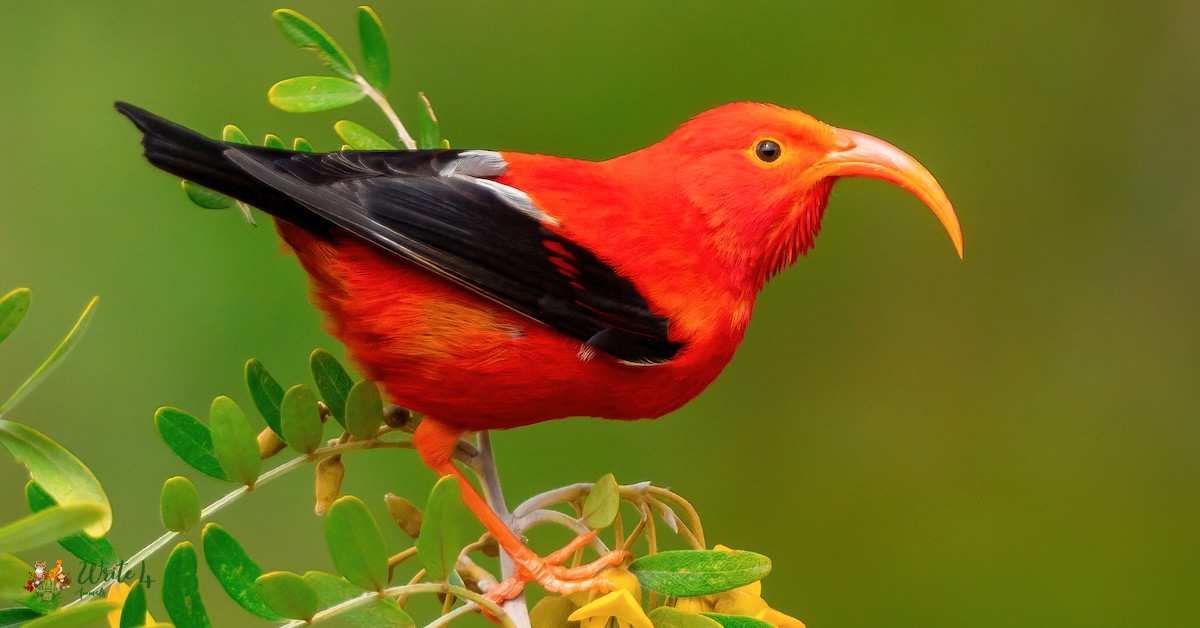
The ‘I’iwi, with its vibrant scarlet feathers, becomes a symbol of the islands’ unique biodiversity. These honeycreepers play a crucial role in pollination, sipping nectar from native flowers and aiding in the reproduction of plant species.
As Hawaii’s endemic treasures, these red-feathered wonders contribute to the delicate balance of the island’s ecosystems, highlighting the interconnectedness of flora and fauna in this remote paradise.
4. Blood-Red Glider (Urodid Moth)
Soaring through the dense forests of Southeast Asia, the Blood-Red Glider, a mesmerizing red animal, graces the skies with its vibrant crimson wings. This nocturnal marvel, belonging to the Urodid Moth family, captivates observers with its graceful flight and eye-catching coloration.

The red hue, reminiscent of a rich blood tone, adds a touch of drama to the nighttime landscape. Beyond its aesthetic allure, the Blood-Red Glider plays a vital ecological role as a pollinator, contributing to the reproductive success of various plant species.
As a denizen of the night, this red moth reminds us of the hidden wonders that come to life when the sun sets, showcasing the beauty of the natural world under the moon’s gentle glow.
5. Red Velvet Ant (Dasymutilla occidentalis)
Contrary to its name, the Red Velvet Ant is not an ant but a species of wasp found in North America. Renowned for its striking red “velvet” coat, this red animal serves as a bold warning to potential predators due to its potent sting.
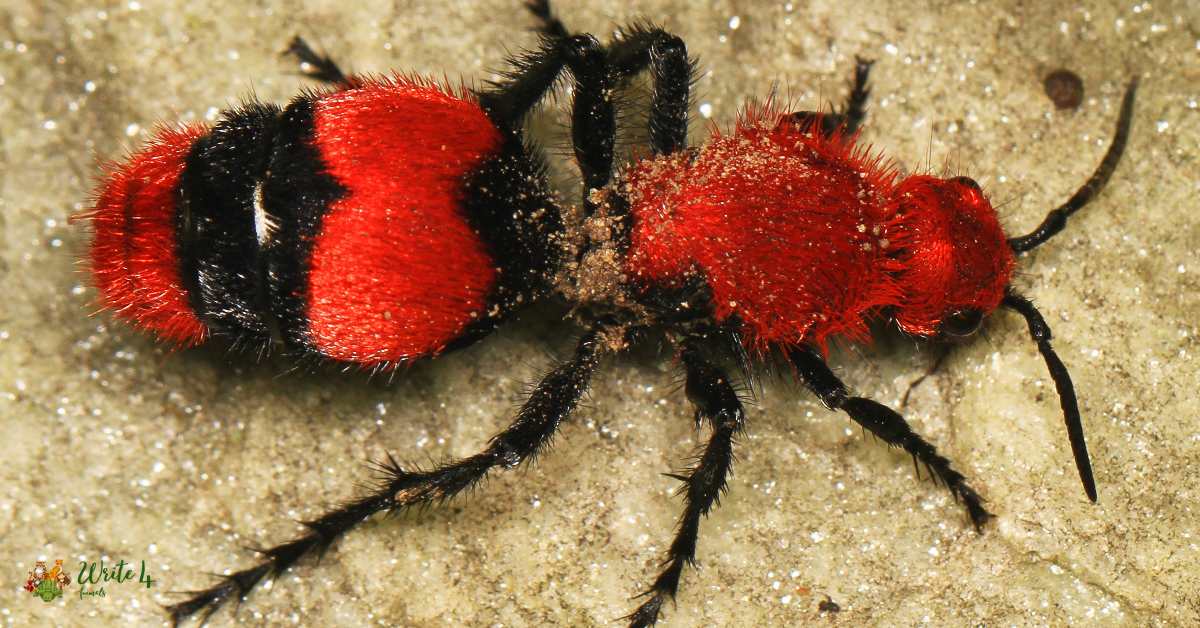
The female, which boasts this eye-catching coloration, stands out against the backdrop of meadows and gardens, signaling danger to those who might consider it prey. The vivid red hue is a result of specialized hairs that cover the wasp’s body, creating a tactile and visual deterrent.
This fascinating adaptation illustrates the intricate ways in which organisms evolve to defend themselves in the complex tapestry of nature, where survival often hinges on effective communication through color and form.
6. Red Milkweed Beetle (Tetraopes tetrophthalmus)
Amidst the meadows and gardens of North America, the Red Milkweed Beetle emerges as a striking red animal with a crucial ecological role. Feeding primarily on milkweed plants, this vibrant beetle contributes to the pollination of these essential flora.
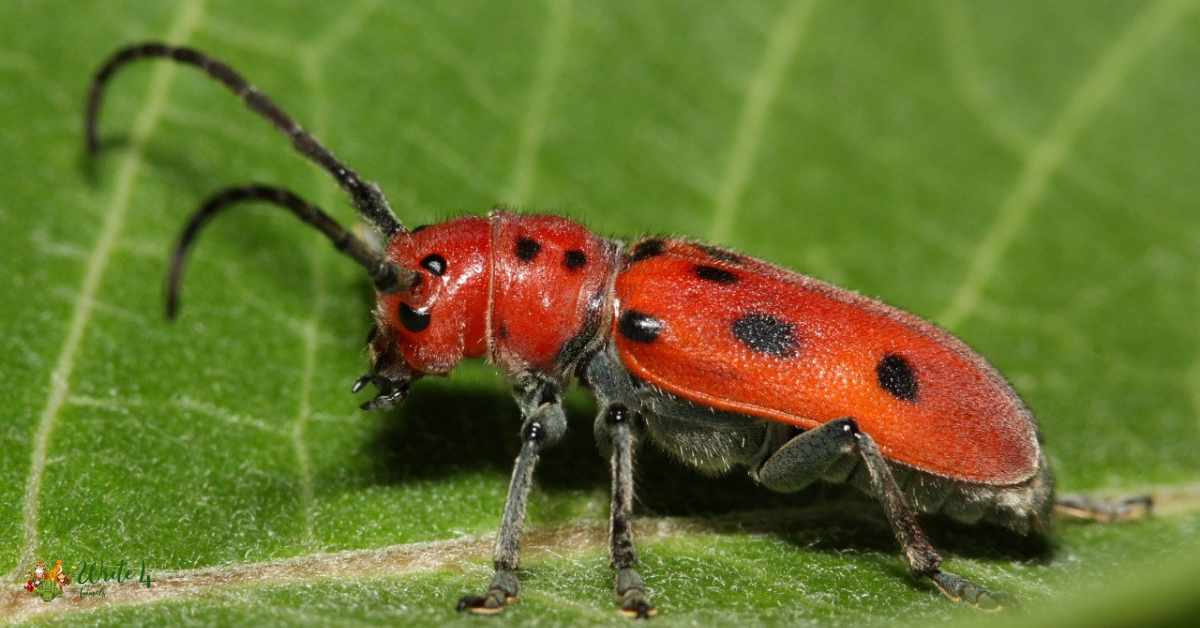
Its red hue serves as both a form of camouflage among the milkweed’s colorful blooms and a warning to potential predators of its unpalatability.
The Red Milkweed Beetle’s presence highlights the interconnected relationships between insects and plants, showcasing the intricate dance of coevolution that shapes ecosystems. As a pollinator and a symbol of nature’s delicate balance, this red-hued beetle plays a vital role in maintaining the biodiversity of its habitat.
7. Phantasmal Poison Frog (Epipedobates tricolor)
In the dense, tropical rainforests of Central and South America, the Phantasmal Poison Frog emerges as a red animal that commands attention. Sporting vibrant red and blue hues, this tiny amphibian serves as a living example of aposematism, warning predators of its potent skin toxins.
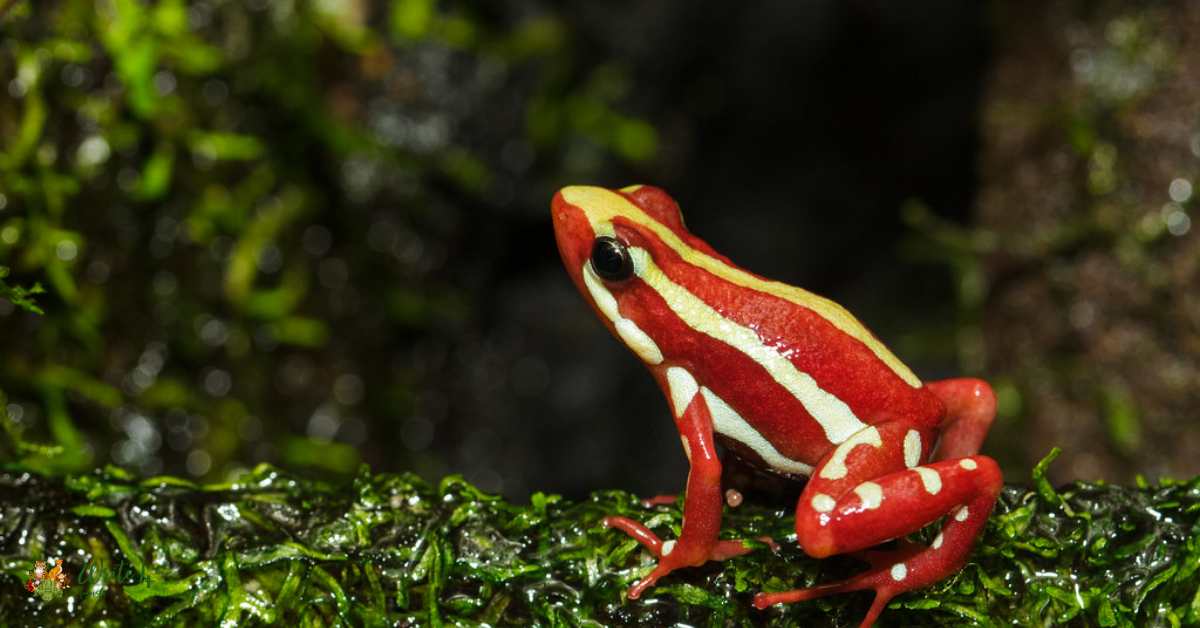
The striking coloration acts as a visual deterrent, signaling danger to any would-be assailants. The Phantasmal Poison Frog’s intricate patterns and vibrant colors contribute to the rich tapestry of biodiversity in its habitat.
As a key player in the delicate balance of the rainforest ecosystem, this red frog highlights the coevolutionary dynamics between species, where survival strategies manifest in captivating displays of color and form.
8. Scarlet Peacock Butterfly (Anartia amathea)
In the sun-dappled meadows of South America, the Scarlet Peacock Butterfly graces the landscape with its wings adorned in shades of red and black.
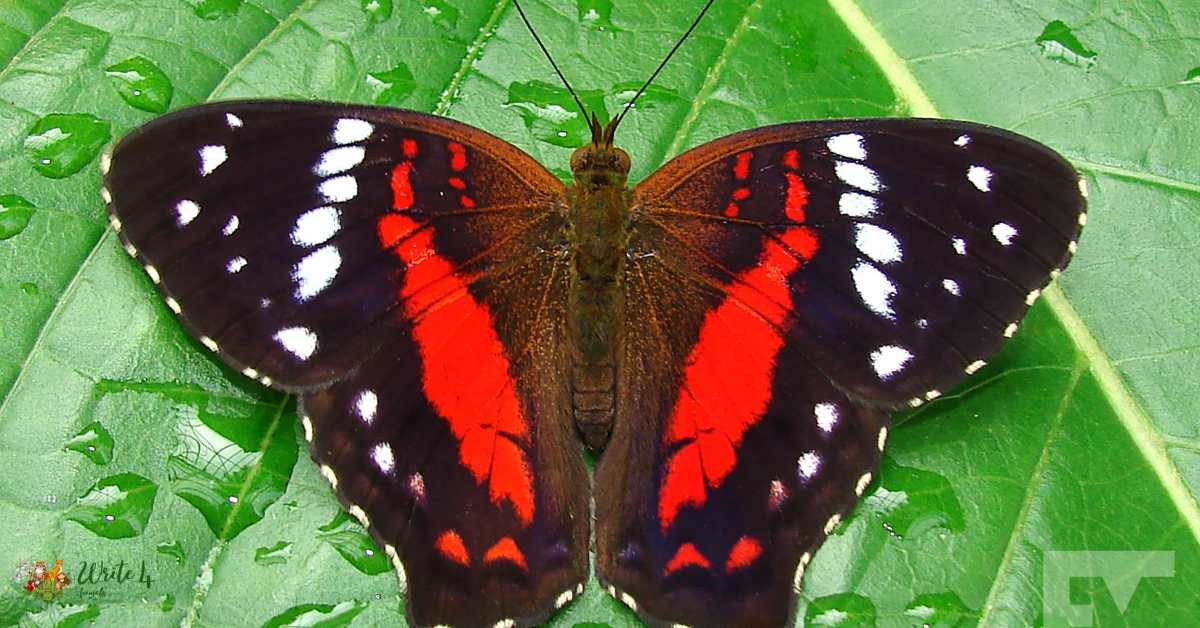
This red animal, with its intricate patterns and vibrant hues, becomes a living canvas of nature’s artistry. Beyond its aesthetic appeal, the Scarlet Peacock Butterfly contributes to the health of ecosystems through pollination.
As it flutters from flower to flower, it facilitates the reproduction of various plant species, showcasing the interconnected web of life in the butterfly’s delicate dance. With its radiant appearance, this red butterfly becomes a symbol of beauty and resilience, reminding us of the intricate relationships that underpin the biodiversity of our planet.
9. Chili Rasbora (Boraras brigittae)
Diving into the freshwater streams of Southeast Asia, the Chili Rasbora emerges as a vibrant red animals, adding a burst of color to the aquatic world. With its intense red hue and diminutive size, this fish becomes a sought-after gem for aquarium enthusiasts.
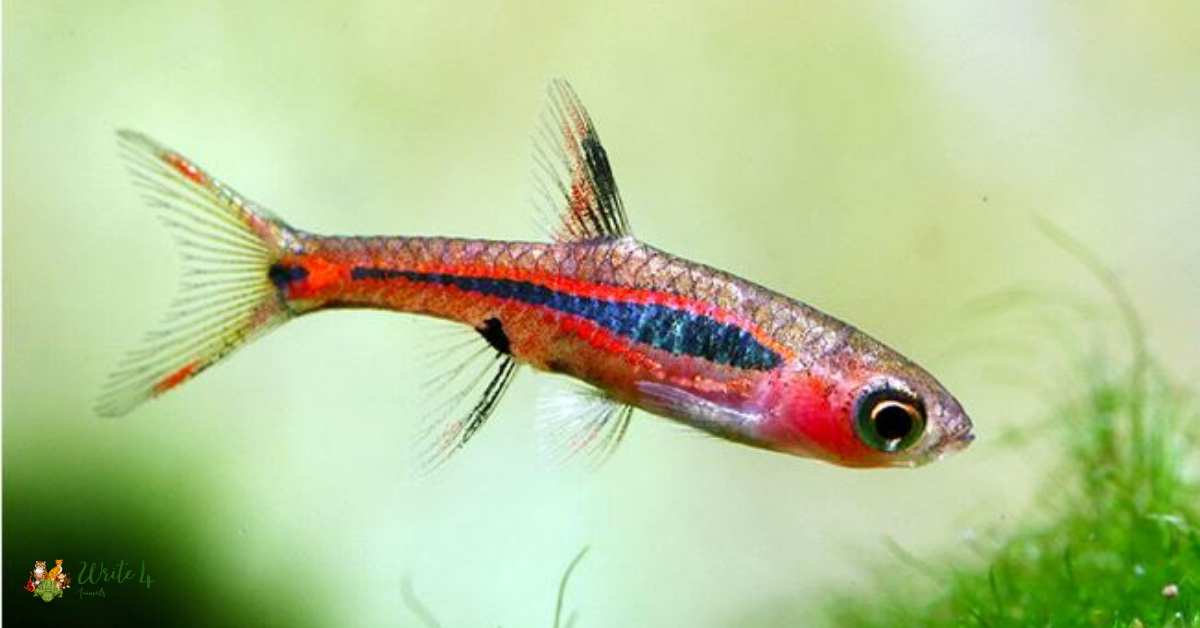
The Chili Rasbora’s vivid appearance is a testament to the diversity of life in freshwater ecosystems. As it darts through the clear waters, it contributes to the intricate balance of aquatic communities.
Beyond its visual appeal, the Chili Rasbora serves as a reminder of the fragile nature of freshwater habitats, urging us to appreciate and preserve the beauty that resides beneath the water’s surface.
10. Red Net-Winged Beetle (Calopteron terminale)
Amidst the woodlands of North America, the Red Net-Winged Beetle graces the forest floor with its distinctive red wings adorned with intricate net-like patterns. This red animal, a member of the Buprestidae family, is not only a visual spectacle but also plays a vital role in forest ecosystems.

As a predator of aphids and other small insects, the Red Net-Winged Beetle contributes to pest control, helping to maintain the health of vegetation. The striking appearance of this beetle serves as a form of aposematism, warning potential predators of its unpalatability.
The red wings, complemented by the intricate net-like patterns, create a visual deterrent, showcasing the fascinating ways in which organisms have evolved to survive in their environments.
As it flits through the dappled sunlight of the forest, the Red Net-Winged Beetle embodies the delicate balance between predator and prey, adding both beauty and functionality to the intricate web of life in woodlands.
11. Rainbow Boa (Epicrates cenchria)
Slithering through the lush rainforests of Central and South America, the Rainbow Boa enchants with its iridescent scales, displaying a captivating array of colors, including shades of red, orange, and pink.
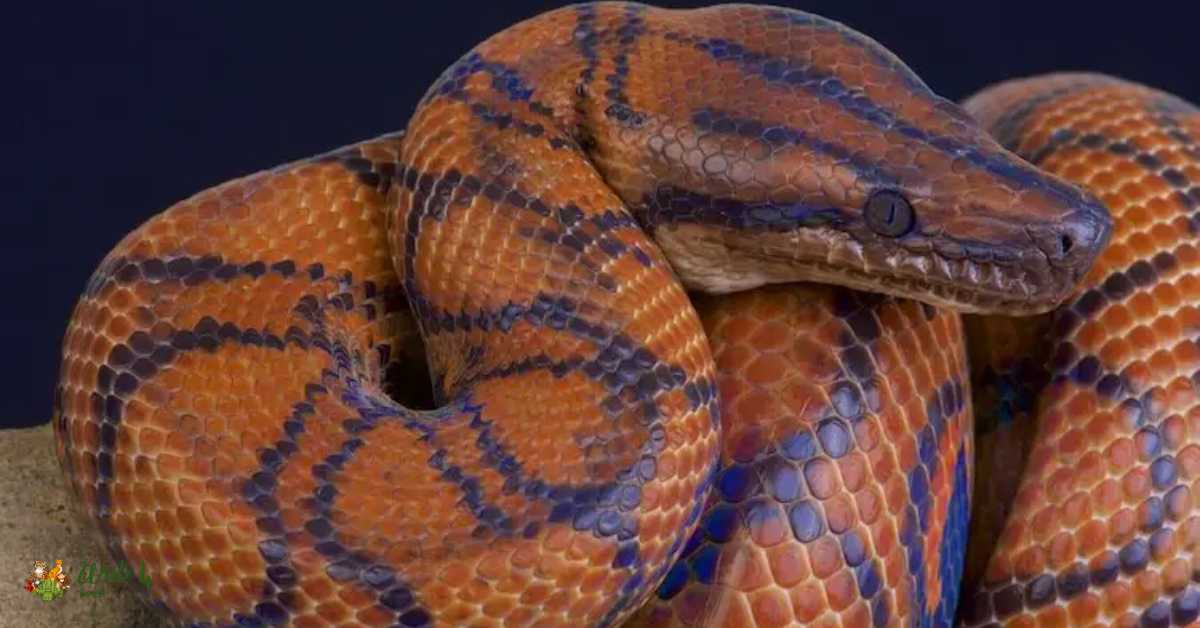
This red animal, a member of the Boidae family, is renowned for its stunning appearance and unique adaptability. The iridescence serves not only as a form of camouflage but also as a means of communication, with colors intensifying during mating displays.
Beyond its aesthetic allure, the Rainbow Boa plays a crucial role in maintaining ecological balance by regulating the population of rodents and small mammals in its habitat.
As a symbol of the vibrant biodiversity found in tropical rainforests, this serpent weaves its way into the intricate tapestry of life, showcasing the beauty of adaptation and coexistence.
12. Geyri Uromastyx (Uromastyx geyri)
In the arid landscapes of North Africa and the Middle East, the Geyri Uromastyx emerges as a robust red animal, adapted to life in harsh deserts. This spiky lizard, with its striking red-hued body, exemplifies the resilience of life in extreme environments.
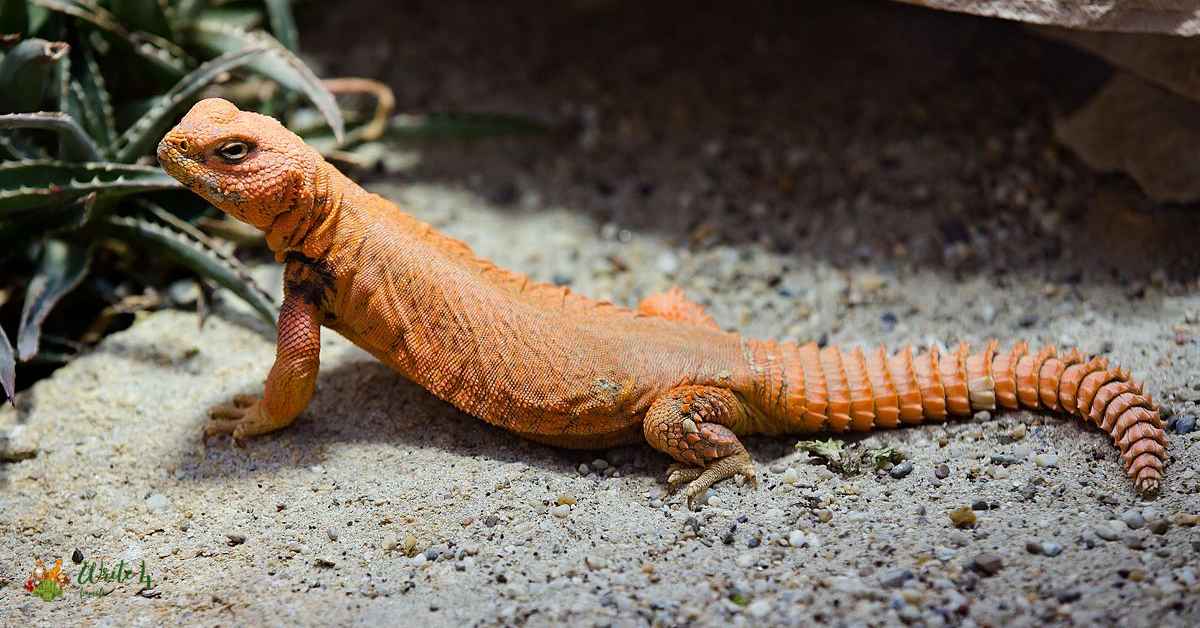
The vibrant coloration serves not only as a form of thermoregulation, helping the lizard absorb sunlight efficiently, but also as a visual display during territorial disputes and courtship rituals.
The Geyri Uromastyx is a master of survival in arid climates, obtaining water from its diet of plants and relying on its specialized adaptations to thrive in a seemingly inhospitable habitat.
As a testament to the diversity of life on Earth, this red lizard embodies the tenacity and adaptability required to endure the challenges presented by its harsh surroundings.
13. Discus Fish (Symphysodon spp.)
Beneath the water’s surface in the Amazon River basin, the Discus Fish unveils a palette of colors, including striking shades of red. This freshwater beauty, a member of the Cichlidae family, captivates aquarium enthusiasts with its vibrant appearance and distinctive disk-shaped body.
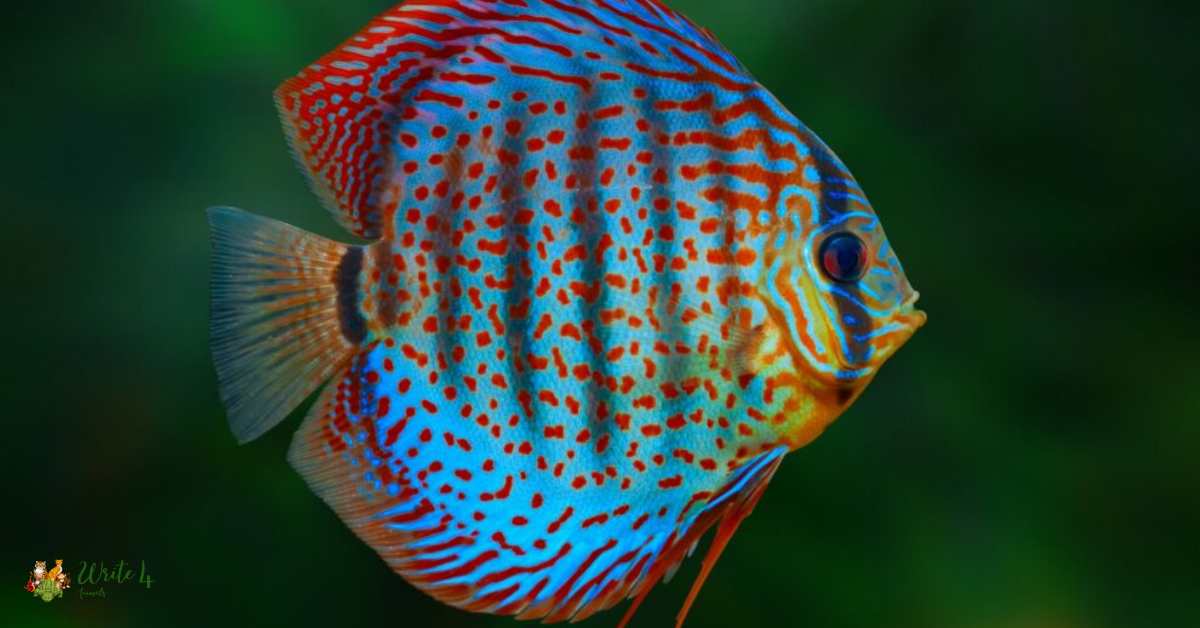
The red hues are not merely ornamental but also serve as indicators of the fish’s mood and health, adding a dynamic element to its underwater world. Discus Fish are known for their intricate parental care behaviors, contributing to the survival of their offspring in the challenging Amazonian environment.
As a flagship species for aquatic biodiversity, this red animal symbolizes the delicate balance of ecosystems in the world’s largest tropical rainforest, emphasizing the importance of conservation efforts to protect these mesmerizing aquatic habitats.
14. Eastern Newt Eft (Notophthalmus viridescens)
In the woodlands of North America, the Eastern Newt undergoes a striking red-colored stage known as the eft phase. This terrestrial juvenile form serves as a protective adaptation before the newt transitions to its aquatic adult stage.
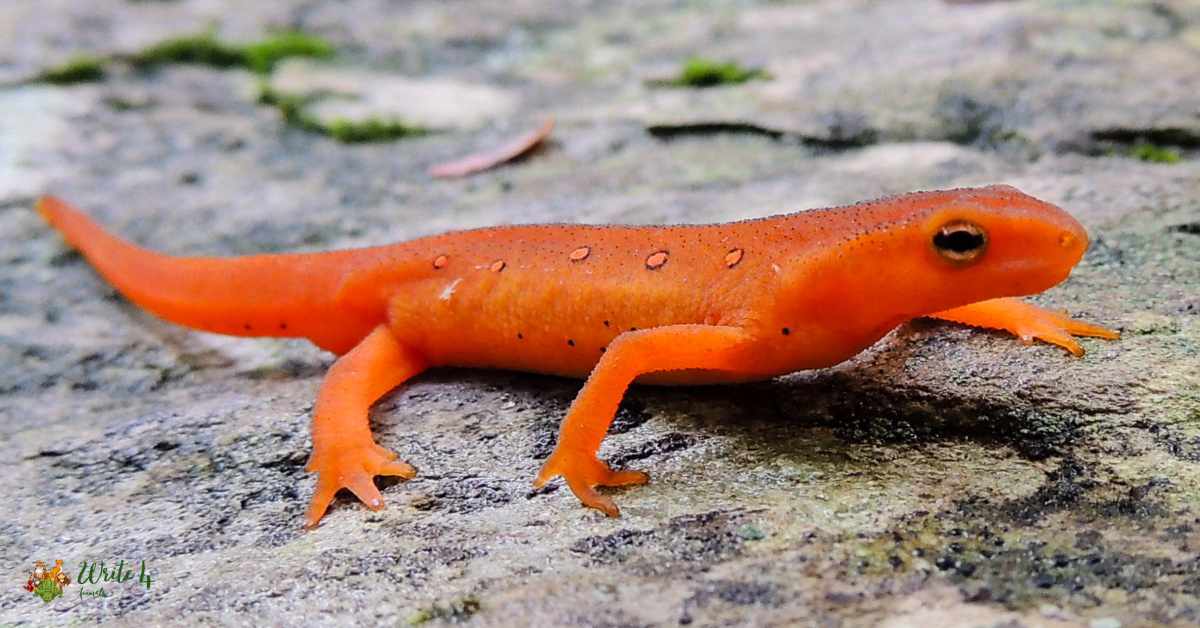
The red hue, coupled with toxic skin secretions, acts as a warning to potential predators, signaling the newt’s unpalatability. This red animal’s life cycle is a testament to the intricacies of amphibian metamorphosis and the various strategies employed by organisms to survive in different stages of their lives.
As it explores the forest floor, the Eastern Newt Eft becomes a symbol of resilience and adaptation in the dynamic landscape of woodlands, contributing to the diverse array of life found in North American ecosystems.
15. Mediterranean Red Sea Star (Echinaster sepositus)
Beneath the waves of the Mediterranean Sea, the aptly named Mediterranean Red Sea Star graces the ocean floor with its crimson arms. This red animal, a member of the Echinodermata phylum, contributes to the diversity and balance of marine ecosystems.
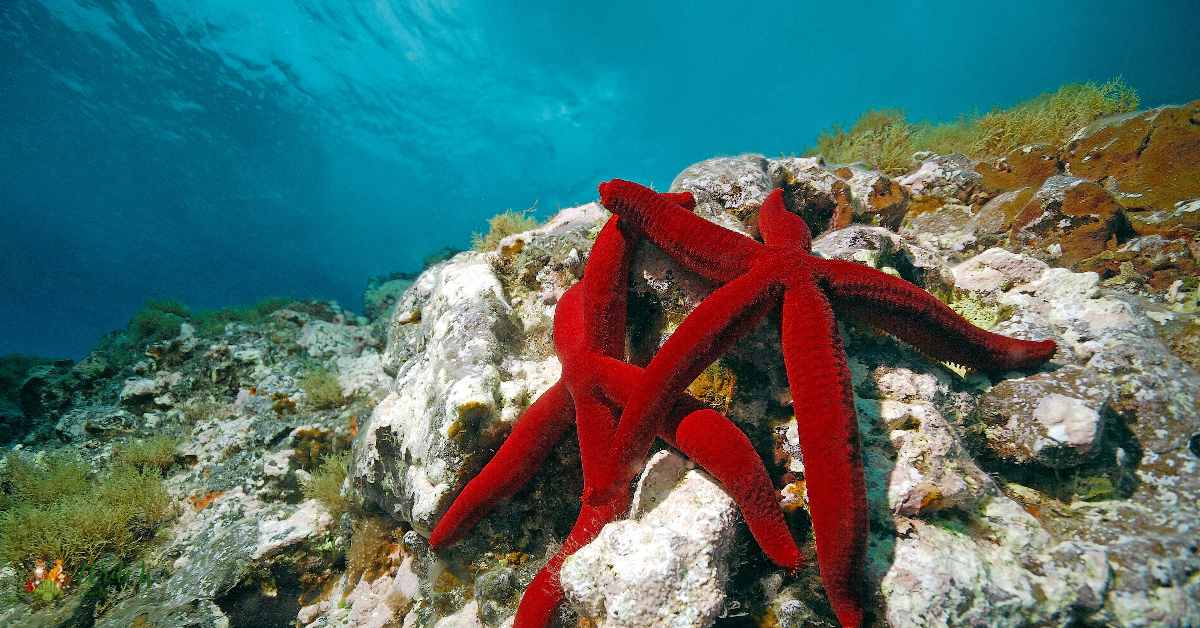
Sea stars play a crucial role in maintaining healthy coral reefs by controlling the population of small invertebrates. The vibrant red coloration serves as both camouflage among the rocky seabed and a visual spectacle in the underwater world.
As a part of the intricate marine food web, the Mediterranean Red Sea Star highlights the interconnected relationships that sustain life beneath the ocean’s surface, emphasizing the importance of conservation efforts to protect these delicate underwater habitats.
16. Summer Tanager (Piranga rubra)
Our journey concludes back in North America, where the Summer Tanager graces the treetops with its striking red plumage. As a migratory bird, this red animal becomes a symbol of the changing seasons, marking the arrival of summer in its vibrant hues.

The male’s intense red feathers, contrasting with the female’s more subdued tones, create a visual spectacle against the backdrop of green foliage. The Summer Tanager’s melodic song adds an auditory dimension to its presence, making it a delightful experience for birdwatchers.
Beyond its aesthetic appeal, this tanager plays a role in insect control, contributing to the ecological balance of its habitat. As the summer sun bathes the landscape, the Summer Tanager serves as a living embodiment of the seasonal cycles that shape the natural world, inspiring awe and appreciation for the beauty of our avian companions.
Frequently Asked Questions
What makes red animals red?
The red coloration in animals is often attributed to pigments in their skin, fur, feathers, or scales. Carotenoids and melanin are common pigments responsible for red hues in various species. Additionally, structural coloration, where microscopic structures reflect and refract light, can create vivid red appearances in certain animals. The presence of red in the animal kingdom serves various purposes, including attracting mates, warning predators, or blending into specific environments.
Are all red animals poisonous or dangerous?
Not all red animals are poisonous or dangerous, but some have evolved to use their vibrant color as a warning signal. This phenomenon, known as aposematism, helps deter potential predators. For example, the Phantasmal Poison Frog and the Red Velvet Ant are red animals that use their color to signal toxicity. However, many red animals, such as the Scarlet Tanager or the Discus Fish, rely on their color for purposes other than defense, like attracting mates or blending into their surroundings.
Where can I find red animals in the wild?
Red animals inhabit diverse ecosystems around the world. Depending on the species, you might encounter them in tropical rainforests, woodlands, deserts, oceans, or freshwater environments. For example, the Tomato Frog is found in the rainforests of Madagascar, while the Geyri Uromastyx thrives in the arid landscapes of North Africa and the Middle East. Exploring these varied habitats allows for the discovery of the unique adaptations and roles that red animals play in their ecosystems.
How do red animals contribute to their ecosystems?
Red animals play diverse roles in their ecosystems. Beyond their visual allure, many contribute to ecological balance. For instance, the Red Milkweed Beetle aids in pollination, the Rainbow Boa regulates prey populations in rainforests, and the Discus Fish plays a role in nutrient cycling in aquatic environments. Understanding these ecological contributions underscores the importance of preserving biodiversity and protecting the habitats that red animals call home.
Are there red animals in captivity?
Yes, several red animals can be found in captivity, especially in the pet trade and in aquariums. Species like the Chili Rasbora, Discus Fish, and various reptiles, including the Geyri Uromastyx and Rainbow Boa, are popular among enthusiasts. It’s essential, however, to prioritize responsible and ethical practices in keeping captive red animals, considering their specific needs, conservation status, and the impact of the pet trade on wild populations.
Can red animals change color?
Some red animals can change color, though this ability varies among species. For example, certain species of frogs, like the Tomato Frog, may change color as a response to environmental conditions or stress. Additionally, chameleons, while not necessarily red, are well-known for their remarkable color-changing abilities. In contrast, many red animals maintain a relatively stable coloration throughout their lives, relying on their hue for various ecological functions.
How do red animals use their color for communication?
Red animals use their color for communication in several ways. For example, in the avian world, species like the Scarlet Tanager and the Summer Tanager use their vibrant plumage to attract mates during the breeding season. In contrast, the Red Net-Winged Beetle and the Red Velvet Ant use their striking coloration as a warning signal to predators. The diverse ways in which red animals employ their color highlight the significance of visual communication in the animal kingdom.
Recommended
1. 15 Cute Pink Animals | rare pink animals
2. 15 Green animals in the world | animals that are green
